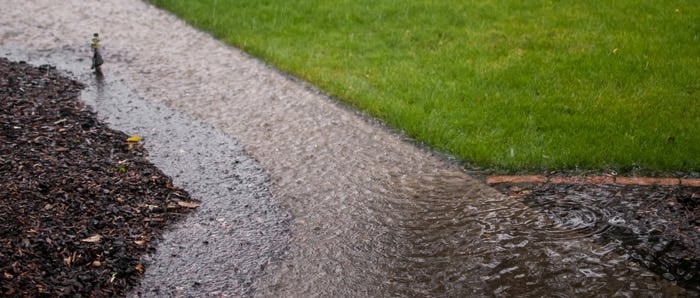Your Guide to the Key Signs That You Need a Waterproofing Contractor
There are parts of the country where people do not know what basements or cellars are. For many reasons, the homes they know are built on slabs. But those houses with below ground basements often experience issues with water, dampness, and related problems.
Water surrounding foundations create hydrostatic pressure beneath cellar floors and against their walls. That pressure can force the water through cracks or leach through surfaces creating mold and mildew. All these conditions are symptoms of structural problems requiring action.
This is not hopeless. You can work to divert water from the foundation area, or you can employ a waterproofing contractor to apply sealants to the surfaces. Some circumstances call for injecting foundation cracks with sealants like epoxies and urethanes or creating internal drainage systems. Other problems call for exterior waterproof coatings or box waterproofing.
Without action on your part, you invite termites to feed on wet wood. You can expect flooring you have laid on the floor and paneling you have attached to the walls to warp and degrade. Water heaters, furnaces, and other metal will rust. And, the odors and toxins in mold and mildew will make the space unpleasant and eventually unusable.
You should find a waterproofing in North York contractor who can identify specific basement water threats and, then, fix these threats and problem fast and economically. In addition, the contractor will do what it takes to prevent future foundation water problems.
7 key signs you need a waterproofing contractor:
- Musty Odor: Someone in every home has a sharp nose for odors. They pick up on every smell and aroma, sometimes annoyingly so. But when they notice a musty odor in the basement, you had better pay attention.
Musty smells come from the presence of mold growing in warm, damp, and humid conditions where there is no humidity control or proper circulation. Mold can thrive on books, cardboard, paper, carpeting, upholstery, and another mold. When it grows on wood, drywall, insulation, stucco, or cement, you have a bigger problem.
If you whiff that musty smell as you enter your basement even if you don’t see anything, it’s a sign you have enough moisture gathering to require waterproofing by a pro.
2. Ugly Mold: If you can see the source of the musty smell, you must act quickly. Mold means larger problems than dampness. It is grossly unhealthy. It might look green, black, or grayish white. Regardless of the appearance, if you can see it, you must get rid of it — and its source.
Common household mold is one of many forms of fungus. It is a microorganism that decomposes dead living material like leaves, plants, wood, and drywall. It doesn’t require much to live, and it will consume organic material on bath and shower tile. Before it accumulates, it is microscopic and tough to see. But mold must have water to grow. Give it some food and oxygen, it will grow and spread in environments between 40 and 100 degrees F and humidity over 60%.
Ironically, mold is the source of the antibiotic penicillin. However, it can affect those with allergies and respiratory problems. Everyone is exposed to some degree of mold every day. It’s just present in the environment. But if you are predisposed to asthma, autoimmune syndromes, emphysema, cardiac pulmonary conditions, and other respiratory issues, you must know what’s going on around you.
3. Salty Efflorescence: Building materials like brick and concrete contain salts. Efflorescence is a powdery white substance you can wipe off walls with your hands. And, because you can wipe it away, you may not take it seriously.
It isn’t as risky to your health as a mold. But it would not be there if it weren’t for moisture leaching through the walls. According to the Masonry Institute of America, “Despite all efforts, efflorescence may sometimes occur. A detail may have been omitted. Materials may have been incorrectly specified or may not have been used as specified. Sometimes conditions just naturally conspire to generate efflorescence on a wall.”
4. Cracked Walls: You get what you pay for, and some developers provide below standard construction. So, if you are a first-time home buyer or inspecting a home for sale, you want to watch for even the smallest cracks in foundation walls and floors. Small cracks get bigger over time, so you want to solve the problem immediately.
Many homes will develop cracks as the house settles, and some houses are built on regional soils that are constantly shifting. Diagonal, stair-step, or vertical cracks in concrete are signs the foundation is moving or heaving, and this could mean serious problems. Horizontal cracks, especially those surrounded by dampness or efflorescence, are warnings of major problems you must address immediately.
5. Overwhelmed Sump: Many homes are built on soils with high water tables or surfaces prone to frequent heavy rains and flooding, you will have a sump pump in the basement or crawl space below the house.
The sump pump captures excess water and pumps it away from the house. If the basement is flooding despite the sump pump, you may need a new or better one. On the other hand, it may mean you have a bigger problem.
6. Seasonal Flooding: Some areas are subject to heavy seasonal rains causing basement dampness, sweating walls, or flooding. You can’t dismiss this as routine. These symptoms are just not normal.
The solution may lie outside the house with better yard drainage, landscaping, gutters, rain spouts, and the like. But you should not take any action without the input of a waterproofing professional.
7. Bulging Walls: When your basement walls bulge, bow, or lean, you have a problem. Your walls are built to retain the surrounding soils and the water they absorb and contain. If, for example, you have heavy runoff from driveways or patios placed near the walls, the excess water will saturate the soil and may gather in pockets near the walls.
Lawns that sloping toward the home will carry water and its pressure to the foundation. And, leaking pipes in the lawn’s irrigation system or external piping will saturate the soil creating weight against the basement walls.
Where to start:
Before you contact your waterproofing contractor, you should run your own due diligence inspection. If you think you have a problem, you start a journal recording what happens and when. You want to record what signs follow heavy rain or snow. Keeping info on temperature and humidity will help the contractor identify the problem. It also helps if you have the original blueprints and drawings of the construction plans and soil excavation and treatment.
The cause might be leaks in piping to and from appliances, and you can have a plumber fix that. Likewise, it could be a water line or sewage drain, and that’s a plumber’s job, too. But if you see or feel the water coming through walls or cracks, you need the contractor. The contractor is trained to find the leaks and their cause or causes.
Water wanders, and it will find its way. So, locating the source can be a challenge. Determine the leak location. The origin can occur well away from the evidence in your basement. So, you may find the waterproofing contractor performing non-destructive tests where the leaks are obvious and at locations suspected of being the water source. They may use dyes to spot the leak location and trace the route the water is taking.
The waterproofing contractor has three objectives in mind:
- Design oversight: The architect’s plan and construction directions are sometimes ignored. The plans may detail internal and external piping, junctions, angles, and more. But builders may ignore the specifics, or the designers may leave it their discretion.
The plans should include shared understandings of excavation and backfilling when preparing the foundation. And, local zoning and building codes may override the original plans without adjustment for the water potential.
2. Installation problems: When design plans and builders’ plans are on the same page, employees still make mistakes. They can be careless or casual about their work. They may lack the training or information to do things correctly.
Their supervision may be unsure, or the workers may lack the tools and talent for multiple assignments. Sometimes, they may inspect their own work by “eyeballing” it rather than checking measurements and other critical indices of accurate work.
3. Inconsistent quality: Construction projects must meet quality standards. The most reputable construction companies have detailed and demanding quality checks. They have supply chains they trust to provide quality materials. They supervise periodic quality checks during the construction process. And they bank their reputation on the quality of their end product.
4. Construction managers should report quality issues to the architects and engineers involved. They may, for example, come across unexpected soil, drainage, or water table issues during site preparation. That’s the time to revisit and revise original plans.
As Tim Carter wrote in The Washington Post, “Water that’s trying to enter your basement comes from three primary places: your roof, overland from land higher than your lot and water flowing through the soil toward your home.” If you have reason to believe your house is in the way, you should find a waterproofing contractor sooner than later.




